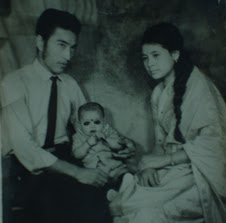Shrestha, B, P. P. Subedi and J. J. Thapa (1998). Socio-Economic Factors Affecting Adoption of Cellar Store as a Post Harvest Technology for Mandarin Orange in the Western Hills of Nepal. LARC Working Paper 98/(34). Kaski, Nepal: Lumle Agricultural Research Centre.
An adoption study on cellar store (CS) for mandarin oranges (MOs) was carried out at six locations at the household level and one location at the community level in the research command area of Lumle Agricultural Research Centre during February - April 1998. The households producing mandarin oranges for marketing at the sites were stratified into mutually exclusive categories on the basis of food self-sufficiency levels and 30% households were sampled by using stratified proportionate sampling method. Household survey was used to identify the level and distribution of adoption profile classified as: not aware, not having tried and having adopted. The reasons for not trying and for adopting the technology, and suggestions to improve the technology for better adoption were also identified. PRA technique was used to identify and stratify the farmers and to identify the problems and prospects associated with CS, whereas case studies were carried out to find the past and present status of the CS. To determine the distribution of adoption, a set of bio-physical and socio-economic factors were developed as: agro-ecological zone, sex of the household head, caste/ethnicity, education of the household head, food self-sufficiency, mandarin orange production, accessibility, marketability, consumers' preference.
Only 10% (household level) and 57.1% (community level) of the sample households had adopted the CS. Caste/ethnicity, food self-sufficiency and mandarin orange production at the household level and education of the household head and food self-sufficiency at the community level showed statistically significant effect on adoption profile respectively. The level of awareness was good at the household (94.3%) and community (85.7%) levels. Lack of technical know-how was the dominant constraint followed by low production and low economic status as important constraints to not-trying the technology. CS technology, being a newly introduced innovation was adopted by all who tried it for the first time. However, the farmers were not in a position to decide whether to continue or drop it in future. Profitability was the main concern followed by high production and good technical support as subsequent important concerns for adopting at the household level and good community solidarity and profitability were the major concerns at the community level. Training for the farmers and good technical support were the major improvements to be made at the household level whereas good roofing to avoid dew drops and good treatment of mandarin orange before storing were the improvements to be made at the community level for better adoption.
My Brief Biography

- BASAN SHRESTHA
- I am Basan Shrestha from Kathmandu, Nepal. I am a development professional with expertise in socio-economic research, monitoring and documentation. I hold 3 master degrees 1) MSc in Regional and Rural Development Planning, Asian Institute of Technology, Thailand, 2002; 2) MSc in Statistics, Tribhuvan University (TU), Kathmandu, Nepal, 1995; and 3) MA in Sociology, TU, 1997. I have gained professional experience for more than 10 years in socio-economic research, monitoring and documentation on agricultural and natural resource management. I had worked in Lumle Agricultural Research Centre, western Nepal from 1997 to 2000; CARE Nepal (SAGUN Program), mid-western Nepal from 2003 to 2006 and Western Terai Landscape Complex Project in far-western Nepal from 2006 onwards. I have published some articles to my credit. With my sound academic background and professional experience, I am much encouraged to undertake PhD to explore equity in Community Forest Management analysing both procedural and distributional aspects. Your kind cooperation, if any, to link with the concerned personnel and authorities would be instrumental and appreciated.
Subscribe to:
Post Comments (Atom)



















No comments:
Post a Comment